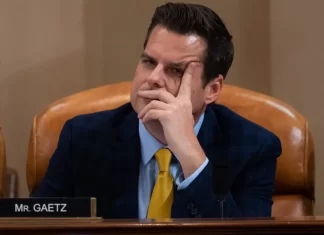By Lechi Eke
The Victorian Era was like the Elizabethan Era, a golden age for Britain. The period witnessed great development, achievements and progress in Great Britain. Politically, Britain spread her imperial tentacles to Canada, India, Australia, the South Pacific and Africa. At this time, the adage that “The sun never sets on the British Empire” came into use. Victoria as queen was emblematic.
During her time, wars were few and small. There were industrial expansions: building of railroads, bridges, underground sewers and power distribution networks across much of the empire.
Although between 1840 and 1882, seven assassination attempts were made on Victoria, the times were mostly great with wealth (some poverty nevertheless), growth of great cities like Manchester, Leeds, Birmingham; increase both in literacy and civic works funded by industrial philanthropists, etc. There were also great advancements in sciences and technology as Charles Darwin came up with his evolution theory, then the inventions of the telegraph and popular press and other inventions.
Britain thrived and became truly great! And in periods like this, of course, literary activities prosper.
Queen Victoria was a diminutive (4ft.11) Protestant queen, born by Prince Edward of Kent and Strathearn, and his wife, Princess Victoria of Saxe-Coburg-Saalfield who later became the Duchess of Kent. She was also the longest ruling monarch on the British Throne after Queen Elizabeth II.
Born May 24, 1819, she was christened Alexander Victoria and lost her father at 8 months old. Her mother was the sister of Leopold, king of the Belgians. (Now, for some royal gossip: Victoria, Princess of Belgium, was formerly married to a German, Emich Carl, Prince of Leiningen, and had a daughter with him named Princess Fedora, but the man died when Fedora was six years old, and Victoria remarried an English prince, Edward and had Queen Victoria!).
At birth, Victoria was fifth in line to the British royal throne. When her father who was the fourth son of King George III died in early 1820, Victoria replaced him as the fourth in line to the British throne after her Uncles: George IV, Friedrich Duke of York, and William IV because these gentlemen had no legitimate children who survived them. (This should teach our women to insist that the men put “a ring on it” before they proceed with dropping the babies!).
Incidentally, both Victoria’s father and her grandfather, George III died in the same year and Victoria’s uncle, George IV took over the throne. When he died, his brother, William IV became king, and when he died, having no legitimate children, Victoria who was barely 18, became the next monarch of Britain and Ireland.
William IV’s reign ended in 1837 when he died, and Victoria took over as monarch. She had met her cousin, Prince Albert, the son of her mother’s brother, Leopold, king of the Belgians when she was 16 and the Belgian king suggested they marry. Victoria consented but because she was queen, Albert could not propose to her. Victoria had to do the proposal in October 1839.
In 1840, Victoria married her Prince Charming and they were very devoted to each other until death did them part in 1861 when Albert was 42. It shattered Victoria’s world and she went into 25 years of mourning, wearing black for the rest of her life. Between the two of them, they had nine children.
At 18 in 1837, Victoria became monarch and was greatly helped by a two-time Prime Minister of Britain, Lord Melbourne (1834 and 1835-41) who taught her how to navigate the mucky waters of constitutional monarchy.
*(It should be recalled that Britain started having Prime Ministers, with Robert Walpole as first, from the time of her German-born king,* George (Louis) I or Georg Ludwig of Hanover (1698-1727). George I of Britain was the son of the granddaughter of James I of Britain, and the Duke of Brunswick-Luneburg, Ernest Augustus).
*For those of us who think that politics is separate from religion, be informed that Georg Ludwig of Hanover was chosen by Great Britain to rule them because he was Protestant ‘cause there was another candidate for the throne rejected after Queen Anne because he was Catholic!
It was Melbourne who helped the queen navigate the tricky waters of the wars between her country and Afghanistan and China, plus the working class movement and uncooperative Conservative government, advising her to let her husband take over the reins of affairs at that time. There was also antagonism between Russia and Great Britain.
Queen Victoria was also said to have “ruled her household with an iron hand that helped keep Great Britain away from the intrigues of European politics.” Also, whether planned or happenchance, the marriages of Victoria’s children, helped to keep her country out of European entanglements for she married them off to almost all the royal families across Europe.
During the Victorian Era, there was great demand for moral responsibilities and political reforms. The passage of the Reform Act in 1832 in England was a forerunner. Such non-conformist churches as the Methodist Church and the Evangelical wing of the Church of England, were agitating for higher moral standards.
The Georgian era which preceded the Victorian age was defined by Romantic rationalism, mysticism and some of the socio-political ideals of romanticism such as emotional passion and other excesses. These were the core rejections of the Victorian Era.
During the Victorian Era, efforts were made to abolish child labour. One of the vital measures taken by the government was to make education compulsory. On the political front, there were gradual shifts towards social and political reforms and an increase in franchise.
Britain also recorded a rapid demographic change as member nations had population explosion. This could possibly be because of the Great Famine in Ireland which triggered massive migration to neighbouring nations which in turn caused a sharp decrease in that nation’s population.
In Literature, the Victorians are said to have “invented childhood” by making efforts to abolish child labour and making education compulsory, so every child went to school and literature for children began to be written.
On social reforms, the literary writers took over to influence English subjects both at home and abroad to embrace a more genteel lifestyle. Victorian writers tried to reclaim the past. Literature at that time, showed reminiscences of the classical and medieval periods telling gallant stories of heroes, knights and acts of chivalry.
Poet Laureate (1850-1892) Alfred, Lord Tennyson captured perfectly such chivalrous stories in his book Idylls of the King.
Some of the writers from this era are: the Bronte Sisters, George Eliot, Thomas Hardy, etc.
The Victorians were blue-nosed, prudish, puritanical, demure, conservative, and everything prim and proper. They were also super class conscious.
To be continued…














